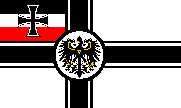
SCHLACHTSCHIFFE
SMS Ostfriesland - Photos of Deck Fittings
This series of photos will be of great value to modelers of WWI-era German warships because we seldom find good, up-close
photos of deck details. We all know what an air port (aka porthole) looks like from a distance and on plans, but below you can
see the difference between two of at least three types of portholes. The same goes for some other other fittings. I only wish the
U.S. Navy had taken more photos of these things.

This next photo shows an extensive skylight complex on the Ostfriesland's quarterdeck. Of course you don't want shells dropping in on you so heavy coverings are
fitted as needed. Here the covers have been removed from the skylights closest to the camera (the skylights themselves can
be opened or removed as well), the covers are closed in the next row, and one cover is open in the middle.

NOTE: Based on the date and location of the above photos, I'm pretty sure that the U.S. battleship in the background is USS Tennessee, BB-43, probably during post-commissioning yard availability.
There were at least three types of portholes found on WWI German warships: airports with no covers; 11 inch airports with light weight covers; and 11 inch airports with
heavy covers. Here are photos of the last two types, light on the left, heavy on the right.
Back to SMS Ostfriesland Photos.
Back to Home.




Here is a series of photos showing the apparatus for working the anchor chain. The first photo starts at the windlass or "wildcat".
The chain comes up out of the chain locker from the hole on the right, circles the windlass, and then goes forward along the "chain race" (on German ships this was a raised area
of dense wood like oak or teak laid parallel to the chain and on which the chain moves) to the hawse pipe, then goes doen to the anchor. When the windlass is shut down, and
in case the chain is severed in combat, the chain is kept in place by a chain stopper. And while most chain links are forged together and inseparatable, lengths of chain
(called "shots" in the US Navy) are hooked together using heavy shackles.






To tie off to the pier, rope lines (hawsers) are used and run through or secured to various deck fittings. The first two photos, in addition to showing the hawse
pipe (a term going back to when anchors were attached to large diameter hawsers instead of chain), also shows two different size roller chocks. The use of rollers made it easier to
handle the lines. Once aboard, the hawser was secured to a double bitt, seen in the third and fourth photos. The last photo shows the hawser reels where the lines were stored when
not in use. These reels are on the aft superstucture just before "D" Turret.





Specialized gear for handling anti-torpedo nets and mine-sweeping kites could be found on German warships. The first photo
shows a double barrel capstan used for handling the many lines that deployed the anti-torpedo nets. The second and third photos show two types of wire
guides through which the line to the kite would run and be secured.



These last photos show Ostfriesland's 33 foot cutter on shore.

